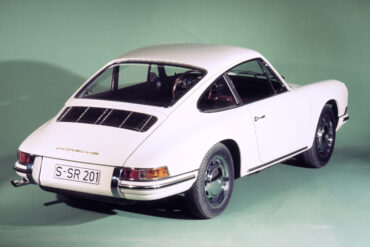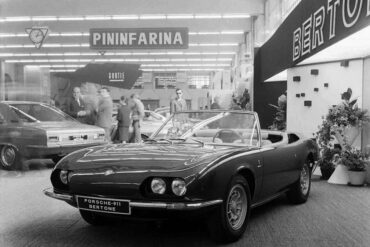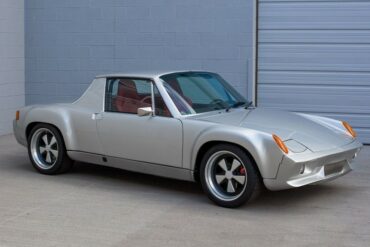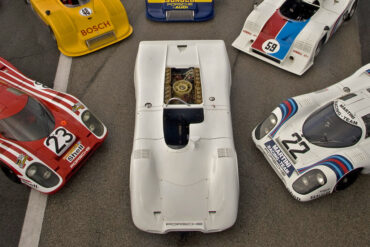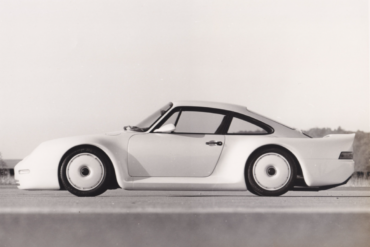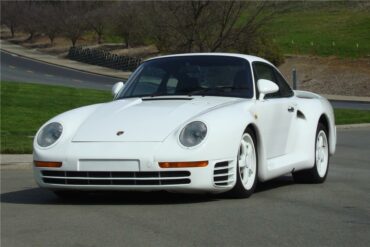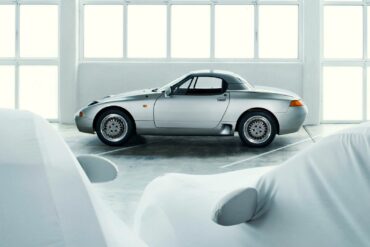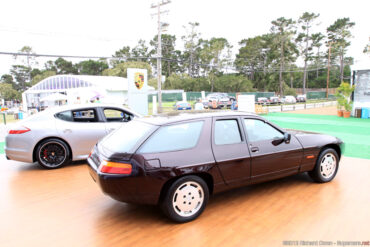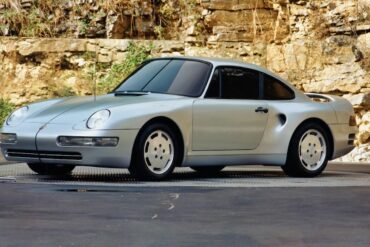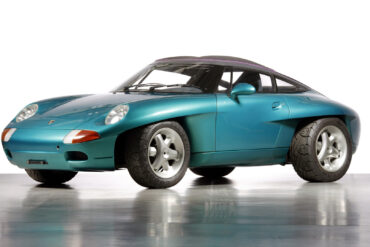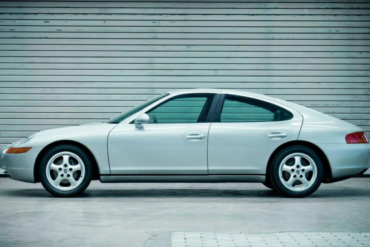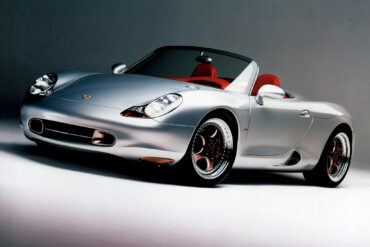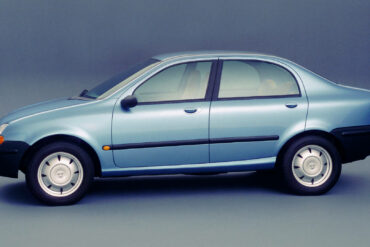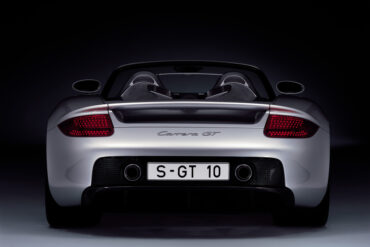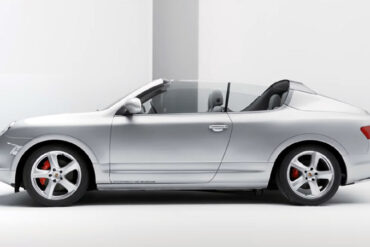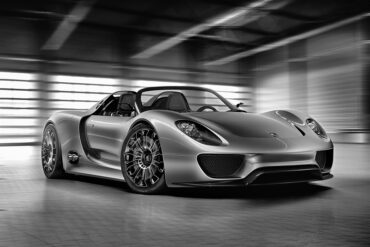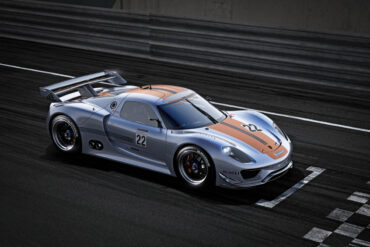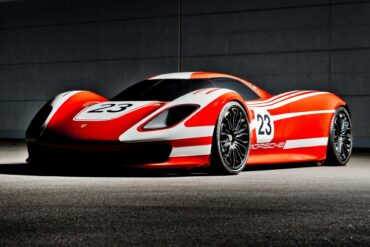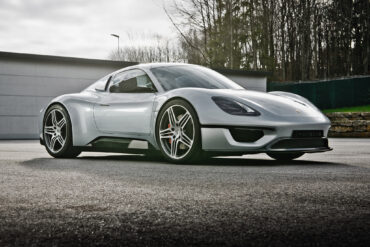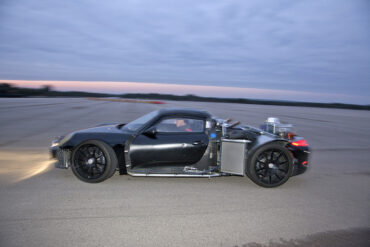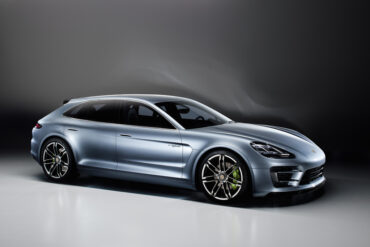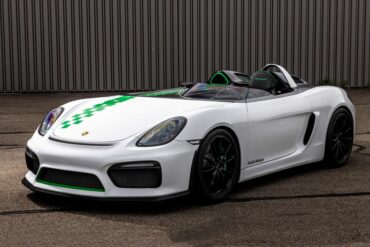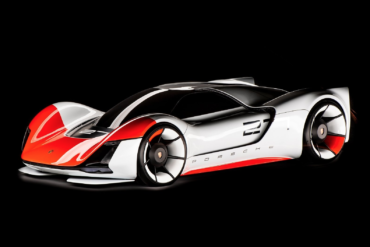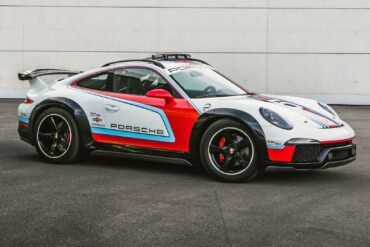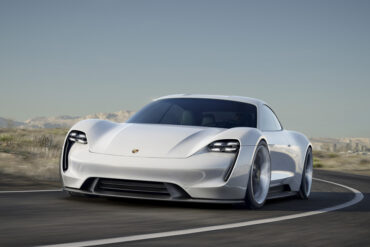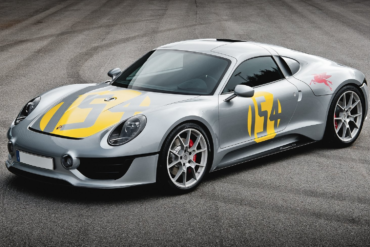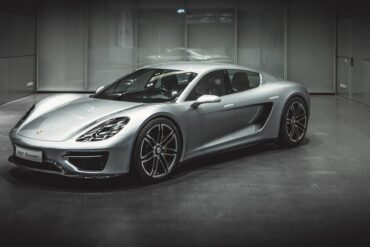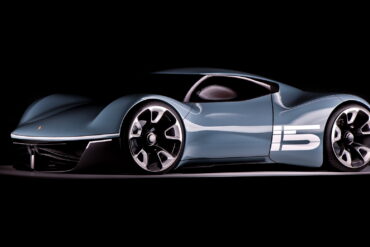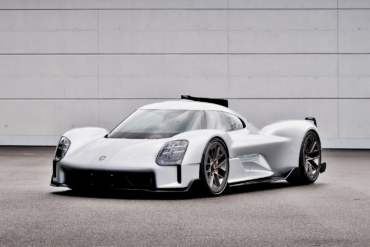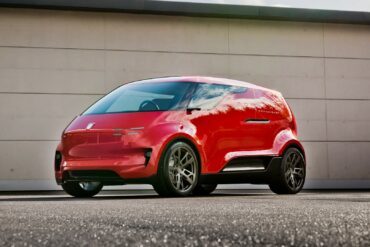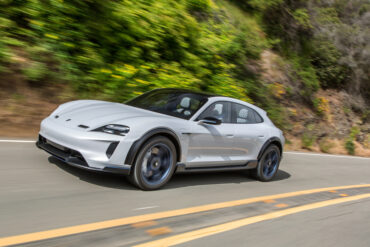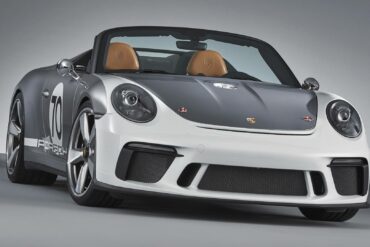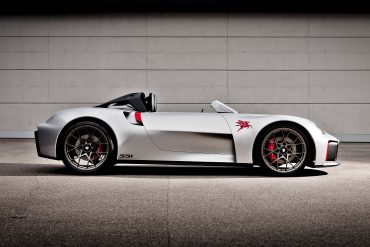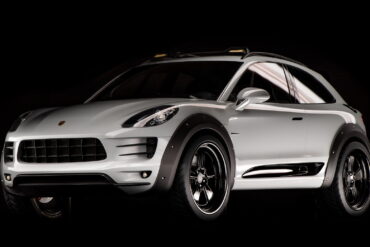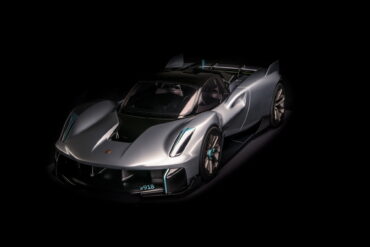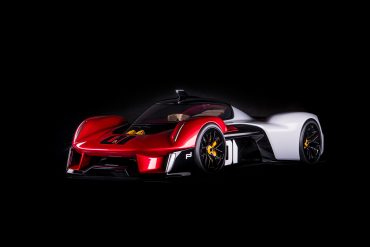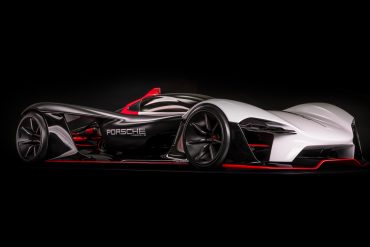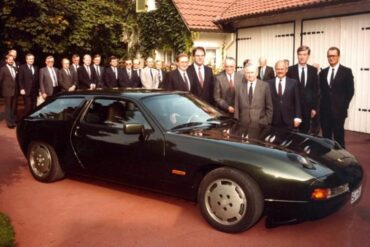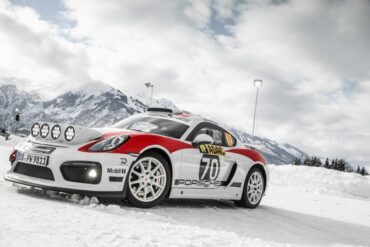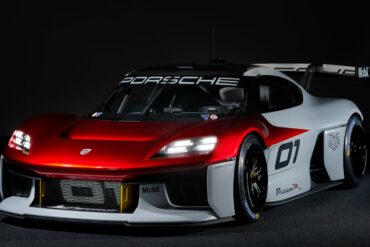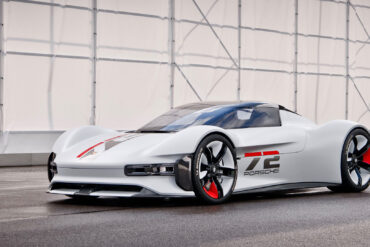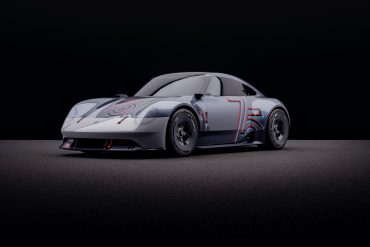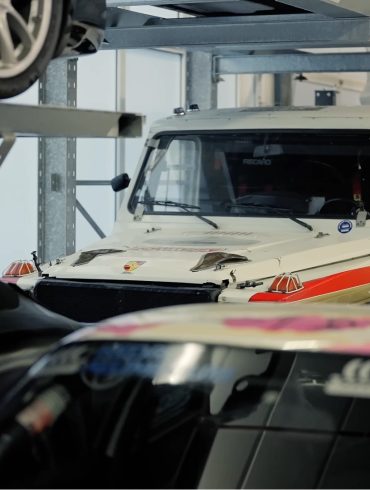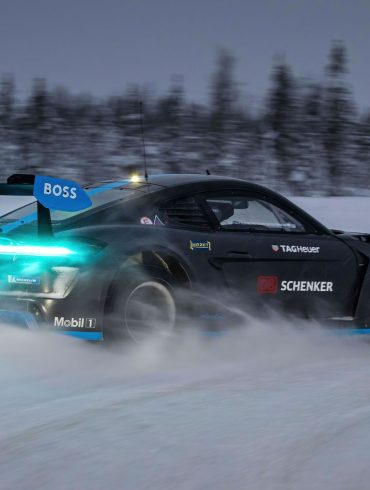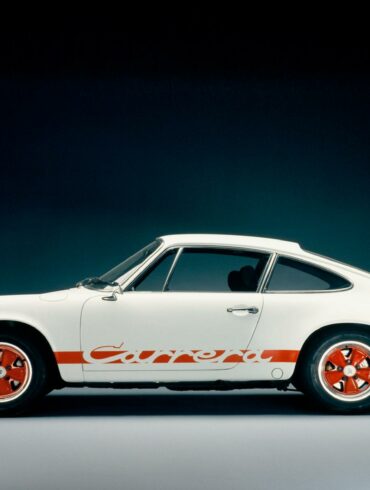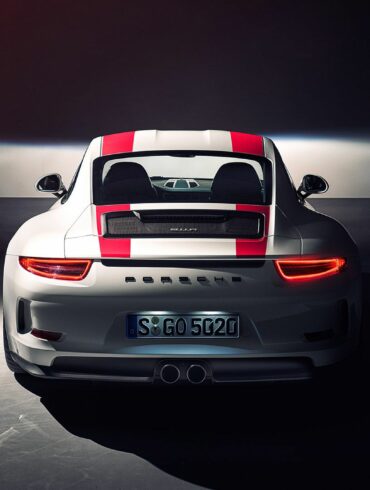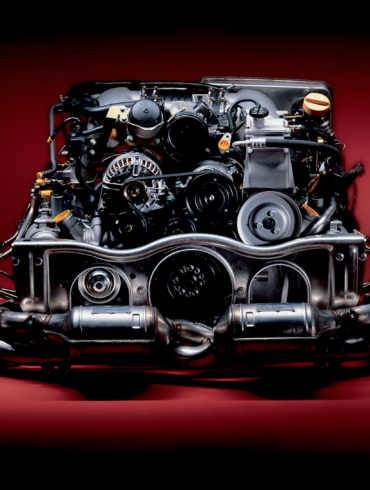In 1963 Porsche introduced their seminal 901 at the 911 at the Frankfurt Motor Show which would be renamed 911 for the 1964 model year. The new car was sold alongside the 356C as an alternative with more power and room for a rear seat. At the 1963 Frankfurt show the public saw Porsches new direction. Compared to the 356 it had a longer wheelbase, a more compact suspension setup and much more power from the flat-6 engine.
Porsche Concept Cars
Full Concept Car List / Model Guides / Recent Concept Car News
The following is a list of Porsche concept cars and prototypes. There are almost 50 concept cars from Porsche that we count and we tried to include them all. While most of these Porsche concepts are known to many, a bunch of them were surprisingly released on November 11, 2020 as part of the "Porsche Unseen" book, where Porsche Porsche previously never seen before concept vehicles from the years 2005 to 2019 were released in one hit.
Porsche is one of those manufacturers who gives us "real" concept cars that end up making it into production. None of the fluff we see from the other manufacturers and not just fanciful ideas, but very real visions of what the future holds for Porsche’s production cars. Everybody thought the Panamera was a surprise, except Porsche had given us several four door Porsche concepts over the years and had been tinkering with the idea for decades.
From a technological perspective, it is hard to ignore Porsche concepts like the 918 Spyder and Mission E. The 918 Spyder was first shown as a concept at the 80th Geneva Motor Show in March 2010. That was well before people thought a mid-engined plug-in hybrid sports car was even conceivable let alone an absolute future classic. The Mission E on the other hand was Porsche’s first all-electric car, showing us the first purely electric sports car in the brand’s history. The production Taycan is basically an evolution of that concept.
Porsche Concept & Prototype Car List
Below is a full list of every Porsche concept car and every Porsche prototype ever made
Porsche Concept Car Guides
Several cars started out as prototypes, which became part of the Porsche lineup. Concepts are when technology and artistic minds go hand-in-hand to create a masterpiece. Whether that becomes production cars or not is left on the hands beyond their control, but let us show respect for the ones that flourished:
Southern California Porsche dealer Johnny von Neumann knew what his customers wanted, and a Targa top Targa 911 wasn’t it. With Porsche’s approval, he hired designer Nuccio Bertone to create a one-off 1966 Porsche 911 Spyder, in hopes of launching low-volume production. Just one example was constructed. The engine incorporated a vertically-mounted cooling fan, a 9.1:1 compression ratio and two triple-choke 40PI Solex carburettors. Peak output was 130bhp at 6100rpm and 174lb-ft at 4200rpm. Transmission was via a Type 901 five-speed gearbox and single-plate clutch.
The Porsche Tapiro is a concept car built by Porsche in 1970. It was designed by Giorgetto Giugiaro and has a traditional 1970s wedge design, which critics say somewhat resembles the De Tomaso Mangusta. The chassis is based on the Porsche 914/6, and it features gullwing-style doors. First shown at the 1970 Turin Motor Show, it will be remembered as one of the most unusual Porsches and the first car to receive Italdesign’s signature wedge shape.
After a highly modified 914 finished sixth overall at Le Mans in 1970, Ferdinand Piëch saw potential for a higher-performance, luxurious version that could be registered for highway use, and pursued the idea of what would become the Porsche 916. Planned for the 1972 model year, the Porsche 916 program was cancelled after eleven prototypes were built.
The Group 7 class in CanAm was virtually unlimited with regard to regulation, so Porsche was free to try many different avenues to source extra power. Two main themes were explored: the first was to go into uncharted territory and turbocharge engines with an exhaust-driven turbine. Eventually this was the chosen route, but it didn't reach fruition until a larger 16-cylinder engine was tried.
In the 1970s Porsche was serious about turbocharging and this prototype signaled the way for later cars like the 930 and the RSR 3.0. It was also the one of the very first show cars fitted with the wide body, large alloy wheels, whale tail and a turbocharged version of the flat-6. All these details eventually appeared on the 911 RSR 3.0-liter race car of 1974. The show car was built from a standard 911S fixed with a radical body kit.
The idea for 959 was born as early as 1983 when this so-called Guppe B prototype was displayed at Frankfurt Motor Show. While there were glimpses of the contemporary 911 in the Gruppe B – the wheelbase, the roofline, the windows and doors, much of the interior – in truth the new model had little in common with Porsche’s perennial sports car. The production 959 ended up being launched in 1987.
The first prototype receiving those modifications was code named “F3”, and was destroyed in the first crash test. A total of 37 prototypes and pre-production cars were used for testing and press activities. Most of these prototypes were dismantled and discarded, but several managed to survive. In 1985, Porsche’s head of development Helmut Bott earmarked 29 930 Turbo chassis to be turned into 959 prototypes for testing.
The Porsche 965 was an engineering mule, used to try and solve the tough problem of how to replace the 930's turbocharged, air-cooled engine to power a new sub-959, range-topping 911. Costs ballooned, the project floundered, and ultimately in its last throes, its engineers got desperate. The flat-six with water-cooled heads was too complex, and too expensive, to work. A water-cooled Audi V8 was tested out back, a last-ditch effort to find a cost-effective, power-dense solution.
Sports two-seater concept car: As a study for a future vehicle concept, between 1984 and 1987 the Porsche Development Center in Weissach worked on a compact, lightweight, and aerodynamic roadster. The project was inspired by a development job previously undertaken for the Spanish automaker Seat. As a small and relatively inexpensive sports car in the price range of US$ 14,000, the Porsche 984 was designed to appeal to a young, sporty clientele.
In 1987 Porsche experimented with a long-wheel-base 928 called the H50 that accommodated four doors and full-size rear seats. It was built on the then recently released S4 platform with the 330 bhp V8. Two different versions of the H50 were made, one as a station wagon and another as a hatchback. Porsche was pretty serious about testing the car and put it though 5000 miles of testing
In 1988, Porsche produced a two-door called the 969, based upon the bodystyling of the 911. Intended as the successor to the Porsche 930, the car did not get past the prototype stage. Porsche intended to create a more powerful, range topping model, based loosely upon the 911. The 969 was to feature a hugely powerful twin-turbocharged engine, and was to pick up where the Porsche 959 left off, using much of the supercar's technology.
When Dr. Ferry Porsche turned 80 years old, he received a 1989 Porsche Panamericana concept car as a gift. The 1989 Porsche Panamericana concept car was a striking two-seater concept study, shown to the public for the first time at the 1989 International Motor Show in Frankfurt, Germany. The Panamericana concept stole the show, drawing surprised and admiring sighs from fans everywhere.
The Porsche 989 a four door performance oriented touring sedan that maintained the iconic shape of the 911 Carrera, but unlike the Panamera, never saw production after it was developed by Porsche between 1988 and 1991. After Ulrich Bez left Porsche in September 1991, the project lost momentum. The severe slump in 928 sales made executives re-think the project. The Porsche Panamera is considered to be the spiritual successor to the 989 project.
The year was 1993 and the month was January when Porsche took the wraps off the Boxster design study at the Detroit Motor Show. The public and automotive media received the newcomer will great enthusiasm, celebrating Porsche’s decision to embrace the mid-engine configuration once more with a feeling. But better still, the Boxster saved Porsche from bankruptcy. This is the car that played a big part in Porsche's success moving forward.
Porsche designed the C88 experimental car for China. The brief was simple: the car had to be cheap, efficient, large enough to carry five people, and be built in China under a joint venture with First Automotive Works (FAW). Given the rate at which the Chinese car market was growing – not to mention the 1.2 billion people who lived there at the time – it’s no surprise that a number of firms responded with plans and prototypes. Porsche was one such company.
For the 2000 Paris Motor Show, Porsche prepared a concept supercar that eventually turned into a limited production car. The concept's basic shape and specification were close the production version, which included a low-mounted V10 engine that was sourced from their scrapped Le Mans prototype program in 1999. Two functioning concepts were produced for both the European and North American show circuits.
It is not clear if the Cayenne Cabriolet was ever intended for production, but considering how much work was put into the concept car, the project was taken seriously. The car has the nose and brakes from the Cayenne Turbo, but this concept car might have a normally aspirated engine, if at all. Porsche has not unveiled any technical information.
The 918 Spyder concept combines high-tech racing features with electric-mobility to offer a fascinating range of qualities. The highly-innovative 918 Spyder concept car combines Porsche's Intelligent Performance philosophy with the high-technology from motorsport, with classic but modern design to make a truly convincing statement.
Made as a demonstrative show-car, the 918 RSR ‘Racing Lab’ was part of a new initiative called Porsche Intelligent Performance which will likely develop hybrid racing cars for outright victories at events like the 24 Hours of Le Mans. The concept version revealed at Detroit has the same visual styling cues as the Spyder released in 2010 with the hybrid drive system from the 911 GT3 R Hybrid.
In 2013, a small team from Weissach developed a tribute to the 1970 Le Mans winner. The concept utilizes adaptive aerodynamics with Salzburg livery like the original. Carbon Fibre skin, carbon fibre Monocoque and a turbocharged eight-cylinder engine with up to 1,000 PS provides the power. The front and rear suspension are based on 918 components, utilizing motorsport-inspired linkages and pushrods.
This concept car was kept in secrecy until 2020. Under the cover there is a Volkswagen XL carbon fibre monocoque chassis and the car could have been powered by a high-revving motorbike engine. The 1:1 hard model of the possible future 904 looks similar to the Porsche 918 supercar from the front and to the F. A. Porsche designed 904 Carrera GTS supercar from the side. It looks just perfect!
Porsche 918 Spyder Prototype is a combo of mis-matched Porsche parts that looks more like a Frankenstein car than a cutting edge technical automotive marvel. But don't let the crazy exterior fool you because underneath, the 918 Spyder Prototyp is a pure science experiment designed to wow us in a few years.
Porsche is presenting the Panamera Sport Turismo concept car to show how amazingly intelligent and efficient drive technology might look in the design language of tomorrow. The Sport Turismo unites the next generation hybrid drive with new ideas for an evolutionary, sporty body concept; it combines Porsche performance with comprehensive everyday practicality.
In 2015, Porsche's executive board ordered Weissach engineers to design and build the lightest sports car possible based on the 981. It was to be more minimalistic than the 981 Spyder. Some of the inspiration came from the 1968 Porsche 909 Bergspyder. This is one sexy one-seater and roofless extreme machine. It received the 3.8-liter Cayman GT4 engine, which was tuned to produce 387hp (up 7hp). Expected Nürburgring time of around 7:30 minutes.
The Porsche 906 Living Legend is a racing-inspired supercar concept, designed and built by Porsche in 2015. The 906 Living Legend was intended to be a ‘super sports car’; the road-legal vehicle features a mid-engine design and massive air vents for cooling. The car’s shape is undeniably fluid, with the front and back end establishing a particularly effective gradient. The 906 Living Legend’s design includes subtle, longitudinal strip brake lights.
The Porsche 911 Vision Safari a sports car-based rally car concept, designed and built by Porsche in 2012, based on the Porsche 911 (generation 991) and harkening back to the original car, the Porsche 911 SC Safari from 1978. Features a raised suspension, reinforced wheel housings and large bumpers.
With the Mission E prototype at the IAA 2015, Porsche offered a preview of a vehicle that will be a genuine Porsche and a fully-fledged alternative to vehicles with a combustion engine – in terms of both driving performance and range. The concept car combines the unmistakable emotional design of a Porsche with excellent performance and the forward-thinking practicality of the first 800-volt drive system. Four doors and four single seats, all electric and over 600 hp.
This extreme road sports car based on the Porsche Boxster is reminiscent of the groundbreaking Porsche 550 racing coupé that started in 1953 at the 24 Hours of Le Mans. The front and rear bonnet open in opposite directions and fuel is supplied via a central nozzle at the front. At the rear is an eight-cylinder engine with excessive sound development.
The Porsche 960 Vision Turismo is a mid-size sedan concept, designed and built by Porsche in 2016 that previewed some of the future design cues that Porsche would incorporate into the Porsche 911 (generation 991.2). The creation of the concept happened nearly by accident when somebody saw a sketch of the 918 Spyder and thought it had four doors .
The basic idea: a study by one of Porsche’s design interns, the Porsche Vision 916 has compact dimensions similar to the Porsche 916, which was developed as a prototype in the early 1970s. However, this Little Rebel is driven purely electrically by four wheel hub motors. It pays homage to the car designer Ferdinand Porsche and his first Lohner-Porsche racing car with four-wheel drive from 1900.
The Porsche 919 Street is a supercar concept, designed and built by Porsche in 2017, based on the highly successful Porsche 919 Hybrid LMP1 race car. The dimensions and basic design elements of the 919 Street are the same as that of the race car. However the 919 Street instead has a less-pronounced wing and more street-car comforts. This is the one we wish they made. Alas, the 900 HP LMP1-Based road-ready rocket that never was.
The Porsche vision “Renndienst” (2018; 1:1 hard model) is the free interpretation of a family-friendly space concept for up to six persons. The design team designed a futuristic “space shuttle“ with exciting proportions. The study shows how the Porsche design DNA with its characteristic surface modeling can be transferred to an unknown vehicle segment for the brand.
The Mission E Cross Turismo concept is a more outdoorsy activity-wagon version that was first displayed at the 2018 Geneva motor show. This concept was built as a drivable car. Porsche essentially took the Mission E project’s hardware in development, so it serves as a snapshot of where things stood about two years into a five-year program.
Porsche is celebrating their 70 years in the making with the Porsche 911 Speedster Concept car. With the Carrera Cabriolet 4 body as its canvas, the Speedster concept pays homage to its predecessors - most notably, the Porsche 356 1500 Speedster. The limited production Speedster is immediately distinguishable from the current 911 line-up, with its “double bubble” tonneau cover and other unique offerings and design tweaks.
Porsche plans to return to rally racing with a 718 Cayman GT4 Clubsport R-GT Rallye. The car came about because of the positive response Porsche received on a rally car concept that it sent out into the world. Before the official car comes, Porsche did some testing with its 718 Cayman GT4 Clubsport-based concept race car. The company let racing legend Walter Röhrl get behind the wheel at the GP Ice Race in Austria.
The 551 Vision Spyder was built in 2019 but kept a secret until its unveiling this week. Billed as a 21st century reimagining of the 1954 machine that made Porsche’s name, in fact it’s really an hommage to one particular car, James Dean’s Little Bastard, wearing the race number 131 (Dean’s was 130) and the licence tag “Little Rebel”.
The Porsche Macan Vision Safari is a 3-door compact SUV coupe concept, designed and built by Porsche in 2013, essentially showing what would be an off-road Porsche Macan. The concept only had two doors compared to the four in the normal SUV, and came with a host of off-road-oriented accessories, some of them including an increased ride height, larger front and rear tires.
The Porsche Vision 918 RS is a supercar concept, designed and built by Porsche in 2019, to preview what essentially could be the next generation of a trackday, street-legal Porsche 918 if it were still in production. Some of the design elements, none of which bear resemblance to the original Porsche 918, include sharp and soft creases and large air intakes, three fins on the widened rear fenders and roof.
The Porsche Vision 920 is a race car concept, designed and built by Porsche in 2019, to preview what essentially could be a successor to their highly successful LMP1 race car, the Porsche 919 Hybrid. Porsche says the company designed the concept as either a super sports car for the road or as a possible racing car that could be used in a customer motorsport series.
The Porsche Vision E is a race car concept, designed and built by Porsche in 2019, to preview what essentially would be a future customer race car from Porsche. Using technology from their Formula E race car, the Porsche 99X, the company says that this concept would preview what would be a race car that private individuals can drive, to get the closest feel to Formula E in terms of performance and driving dynamics.
The Porsche 942 was a special edition of 928 submitted by the company as a gift to Ferry Porsche on his 75th birthday in 1984. Also known by name 928-4, 928S, it had an additional 254 mm wheelbase than the normal 928 production model, including an extended roof over the rear seats to better accommodate tall passengers, headlights very advanced technology, the motor 5 liter 32 valves before introduced to the U.S. market.
For testing purposes Porsche Motorsport built a few tarmac rally cars based on the Cayman 981 GT4 racing version. The Cayman rally car was the course car for the WRC (World Rally Championship) 2018 ADAC Rallye Deutschland. The FIA R-GT Cup was contested on tarmac rounds of the ERC and WRC, like the German WRC event. For Porsche, the entry of a concept study based on the near-production GT circuit race car was a critical test under real conditions.
The Porsche Mission R concept is intended to equal the performance of the 992-series 911 GT3 Cup. It features 900-volt fast-charging architecture, an 82.0-kWh battery pack, and modularly integrated front and rear motors with single-speed transmissions featuring straight-cut gears (typical in racing) and mechanical differential locks. The front and rear motors thus provide all-wheel drive and are identical; in "qualifying mode," they produce a total output of 1,073 horsepower, whereas "race mode" delivers 671 total horsepower. The Porsche Mission R is theoretically capable of a best 0-60-mph time of about 2.5 seconds and a top speed of 186 mph or so.
The Porsche Vision Gran Turismo concept is designed for the PlayStation video game, Gran Turismo 7. Porsche, like other automakers, has designed a car specifically for the game. While it may seem like a mid-engined sports car, the Porsche Vision GT is a pure EV. It features no traditional doors. Instead, the upper canopy opens up at the front to access the cockpit. The pure EV uses an 87 kWh battery that would last for 310 miles. The peak power output is a bit under 1,300 hp from an all-wheel-drive setup. The Porsche VGT can accelerate from 0-62mph in a plausible 2.1 seconds and max out at 217mph.
Built on the technology platform of the 718 Cayman GT4 RS, the Porsche Vision 357 is a design study that represents outstanding sports car performance. The exterior concept study is the highlight of the special exhibition “75 Years of Porsche sports cars” at the Volkswagen Group’s “DRIVE” Forum in Berlin. The fundamental concept reflects the interplay between tradition and innovation: what would the dream of a sports car of Ferry Porsche might look like today? A tribute to the 356 on its 75th anniversary.
More Porsche Concept Cars
All the recent news, updates and excitement of Porsche's concept cars
Porsche Parade invades NYC
Porsche celebrates fashion’s big night out
Porsche GT4 e-Performance attacks the artic circle
Winter exploration, on studded tires!
Join Our Porsche Community
Sign up for our weekly Porsche newsletter. The latest Porsche news, rumors, reviews and more delivered to your inbox. Cool Porsche stuff perfect for the flat-six obsessed.
More Porsche Research
There is a lot more Porsche data, details and obsession to explore.


